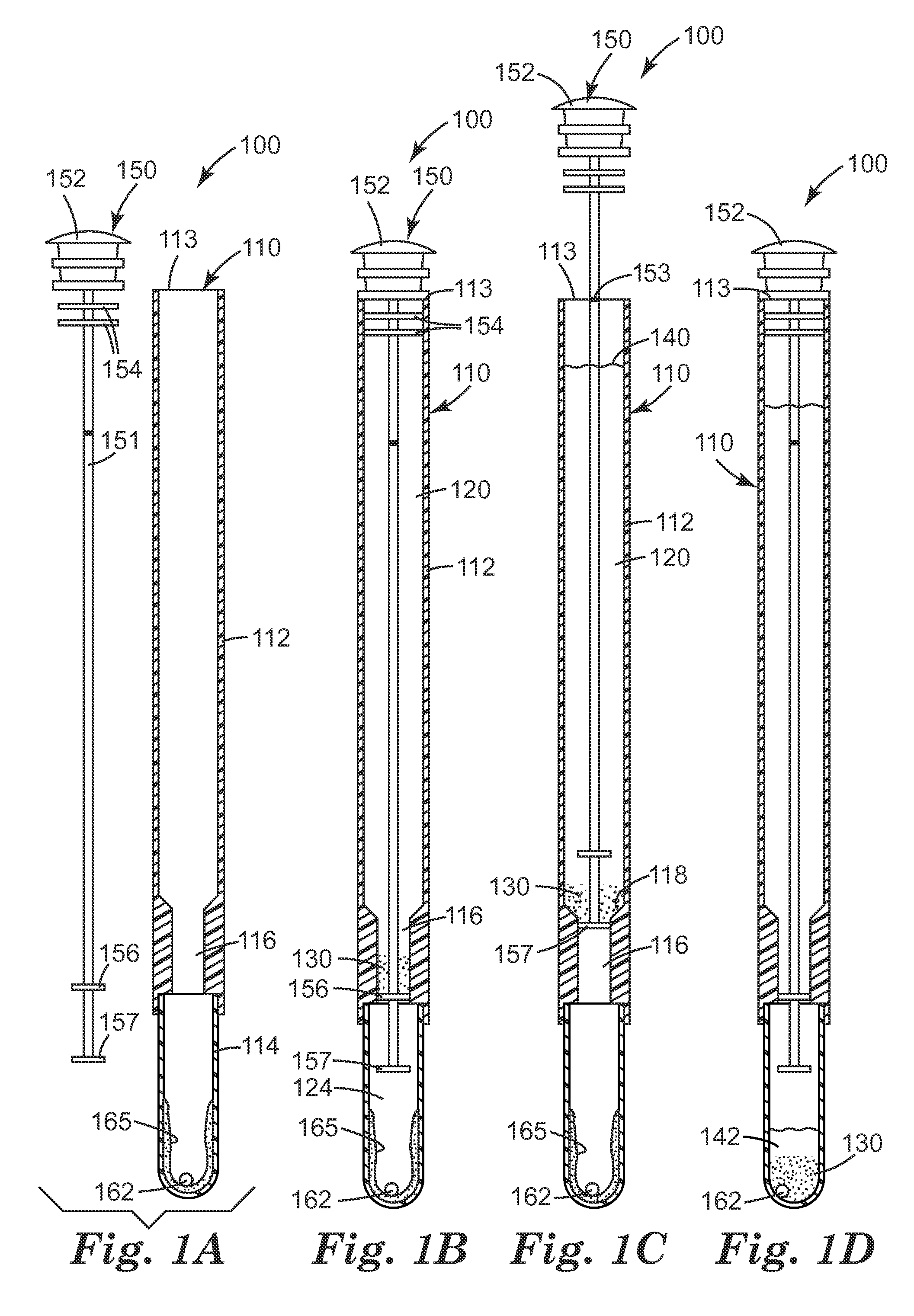Live bioload detection using microparticles
a technology of microparticles and bioload, which is applied in the field of live bioload detection using microparticles, can solve the problems of not being able to distinguish quickly and/or easily the presence of live cells from dead cells, and requiring long periods of time, hours or days) before detection, and achieves the effect of rapid detection
- Summary
- Abstract
- Description
- Claims
- Application Information
AI Technical Summary
Benefits of technology
Problems solved by technology
Method used
Image
Examples
example 1
Incorporation of Cell Extractant into Hydrogel Beads after Polymerization of the Hydrogel
[0202]Hydrogel beads were prepared as described in example 1 of the International Patent Publication No. WO 2007 / 146722. Active beads were prepared by drying as described in example 19 and then soaking in active solution as described in example 23 of the International Patent Publication No. WO 2007 / 146722. One gram of beads was dried at 60° C. for 2 h to remove water from the beads. The dried beads were soaked in 2 grams of 50% (w / v) aqueous solutions of BARDAC 205M (Lonza Group Ltd., Valais, Switzerland) for at least 3 hrs to overnight at room temperature. After soaking, the beads were poured into a Buchner funnel to drain the beads and then rinsed with 10 to 20 ml of distilled water. The excess water was removed from the surface of the beads by blotting them with a paper towel. The beads were stored in a jar at room temperature for at least two weeks before they were used.
example 2
Cell Concentration by Use of Microparticles and Detection Using Cell Extractant-Loaded Hydrogels and ATP Bioluminescence
[0203]3M™ CLEAN-TRACE Surface ATP system was obtained from 3M Company (St. Paul, Minn.). Pure cultures of E. coli ATCC 51183 were inoculated into tryptic soy broth and grown overnight at 37° C. The bacterial culture was diluted to approximately 106 or 105CFU / ml in Butterfield's buffer (pH 7.2±0.2; monobasic potassium phosphate buffer solution; VWR, West Chester, Pa.) and 100 microliters of the diluted suspension were added directly to individual tubes containing ten ml of deionized water (Milli-Q Biocel System, Millipore, MA) samples to obtain approximately 105 CFU or 104 CFU in ten ml, respectively. Ten mg of autoclaved CM-111 3M™ Cosmetic Microspheres (calcined amorphous spheroidized magnesium silicate powders; 3M Company; St. Paul, Minn.) were added to the tubes containing cells and mixed at room temperature for about 15 min. The particles were allowed to settle...
example 3
Detection of Microbial Cells in a Unitary Sample Preparation and Detection Device Using an ATP Bioluminescence Detection System
[0205]A unitary sample preparation and detection device 200, as shown in FIG. 2, is used in this Example. The device contains approximately 10 mg of autoclaved CM-111 3M Cosmetic Microspheres in the upper receptacle 220. Lower receptacle 224 contains a liquid detection reagent 265, which consists of approximately 0.6 milliliters of the luciferase / luciferin liquid reagent solution from a CLEAN-TRACE surface ATP system. The third receptacle 226 contains two BARDAC 205M beads made according to Preparative Example 5 of U.S. Patent Application No. 61 / 101,546, filed Sep. 30, 2008. Ten milliliters of sterile deionized water is added to the upper receptacle 220 of the unitary devices 200 immediately before use.
[0206]E. coli overnight cultures are prepared as described in Example 2. The bacterial culture is diluted to approximately 106 or 105 CFU / ml in Butterfield's ...
PUM
| Property | Measurement | Unit |
|---|---|---|
| particle sizes | aaaaa | aaaaa |
| particle sizes | aaaaa | aaaaa |
| size | aaaaa | aaaaa |
Abstract
Description
Claims
Application Information
 Login to View More
Login to View More - R&D
- Intellectual Property
- Life Sciences
- Materials
- Tech Scout
- Unparalleled Data Quality
- Higher Quality Content
- 60% Fewer Hallucinations
Browse by: Latest US Patents, China's latest patents, Technical Efficacy Thesaurus, Application Domain, Technology Topic, Popular Technical Reports.
© 2025 PatSnap. All rights reserved.Legal|Privacy policy|Modern Slavery Act Transparency Statement|Sitemap|About US| Contact US: help@patsnap.com



